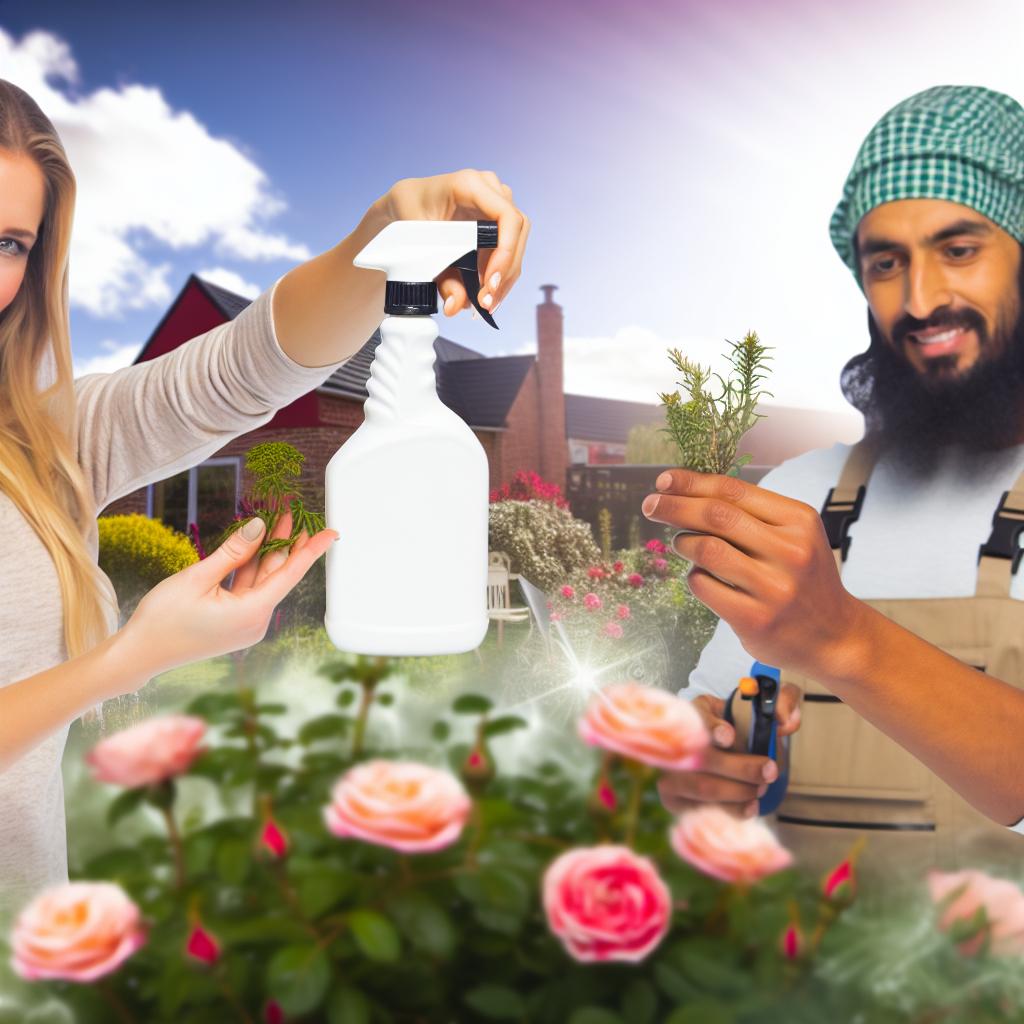DIY Natural Spray for Roses Protect Your Garden
As any gardening enthusiast would agree, roses are among the most cherished blooms in any garden. Their vibrant colors and intoxicating fragrance make them a beloved choice for many, yet they can also be a magnet for pests and diseases. If you’re searching for an eco-friendly, effective method to protect your roses, this guide to creating a homemade rose spray is the perfect solution. Focusing on DIY gardening, this article provides a step-by-step approach to ensuring your roses remain healthy and beautiful.
Benefits of Natural Sprays
Before diving into the DIY process, it’s helpful to understand why natural sprays are beneficial for your garden. Emphasizing chemical-free pest control can yield numerous advantages for both your plants and the environment.
Environmentally Safe
Natural sprays lack the harsh chemicals found in store-bought brands, minimizing their impact on the ecosystem. Utilizing ingredients that don’t harm beneficial insects or pollute the soil is a proactive step towards sustainable gardening.
Cost-Effective Solutions
Creating a homemade rose spray can be much more cost-effective than purchasing commercial alternatives. Most ingredients are easily found in your kitchen or garden, which reduces expenses and fosters a more self-reliant lifestyle.
Healthier Plants
Unlike chemical pesticides, natural ingredients tend not to diminish soil quality or exclude beneficial microorganisms. The use of a DIY gardening approach can support healthier roses and produce robust growth with vibrant blooms.
Reduced Allergic Reactions
Many commercial products contain chemicals that may cause allergies or skin irritations. Natural sprays, by contrast, focus on safe ingredients that reduce the likelihood of adverse reactions for you and your pets.
Ingredients
Let’s delve into the essential ingredients needed to create a homemade rose spray. These ingredients have been selected for their effectiveness in deterring pests while promoting plant health.
- Neem Oil: Renowned for its ability to combat numerous pests, neem oil is an organic solution that disrupts pest lifecycles without harming beneficial insects.
- Garlic: As a natural insect repellent, garlic deters aphids, caterpillars, and other pests while being safe for plants.
- Soap: A mild dish soap or castile soap helps break down oils, allowing them to coat the leaves uniformly. It works as an emulsifier in the spray.
- Baking Soda: With antifungal properties, baking soda can help thwart powdery mildew—a common issue with roses.
- Water: The primary carrier for the solution, water allows you to apply the ingredients evenly across the plant.
- Essential Oils: Rosemary or peppermint oil enhances the spray’s effectiveness, further deterring pests with their strong scents.
Step-by-Step Guide
Now that we’ve covered the benefits and ingredients, let’s move on to creating your homemade rose spray. Follow these detailed steps to ensure a successful outcome.
Gather Materials
Start by collecting the necessary materials:
- A clean spray bottle
- Measuring cups and spoons
- Stirring rod or spoon
- Funnel (optional for easy pouring)
Prepare the Spray Base
- Measure one quart of water and pour it into your spray bottle.
- Add one teaspoon of neem oil to the water. Ensure it’s well-mixed before continuing.
Add Garlic Solution
- Crush two cloves of garlic thoroughly.
- Add crushed garlic to a small amount of water and let it steep for at least an hour.
- Strain the liquid and add it to your spray bottle with the neem oil solution.
Combine Soap and Baking Soda
- Measure half a teaspoon of mild dish soap; add it to the mix as an emulsifier.
- Add half a teaspoon of baking soda to combat fungal issues naturally.
Introduce Essential Oils
- Add a few drops of rosemary or peppermint oil if desired. These oils bolster the pest-repellent properties of your spray.
Mix Thoroughly
- Attach the spray bottle’s lid securely and shake the mixture well to ensure all ingredients are combined smoothly.
Application Tips
Applying your homemade rose spray correctly maximizes its effectiveness. Follow these tips to achieve the best results and maintain healthy roses.
Test Your Spray
Before fully applying the spray to your rose bushes, test it on a small section or a single leaf. This helps ensure there are no adverse reactions on the plant.
Apply in the Early Morning
Spraying in the early morning allows the mixture to dry on the leaves without the intense midday sun, which can cause burning. Additionally, the calm weather ensures the spray is effective against pests.
Focus on Undersides of Leaves
Many pests hide on the undersides of leaves. Be sure to spray thoroughly there for maximum pest deterrence.
Reapply Regularly
For continual protection, reapply the spray every 5-7 days, especially after rain which can wash away the solution.
Handle with Care
Avoid contact with your eyes or skin and wash your hands thoroughly after handling to prevent potential irritation. For a similar topic emphasizing natural solutions check out our Homemade Gnat Spray Guide for more ideas on keeping your plants pest-free.
Implementing a homemade rose spray as part of your DIY gardening routine can transform your crop yield while being gentle on the environment. For a broader perspective on sustainable living, consider exploring Homemade Mod Podge Craft Projects.
By prioritizing natural ingredients, you’ll not only protect your cherished rose plants but also contribute to an eco-friendly gardening approach, reducing reliance on harsh, commercial pesticides. Happy gardening!


